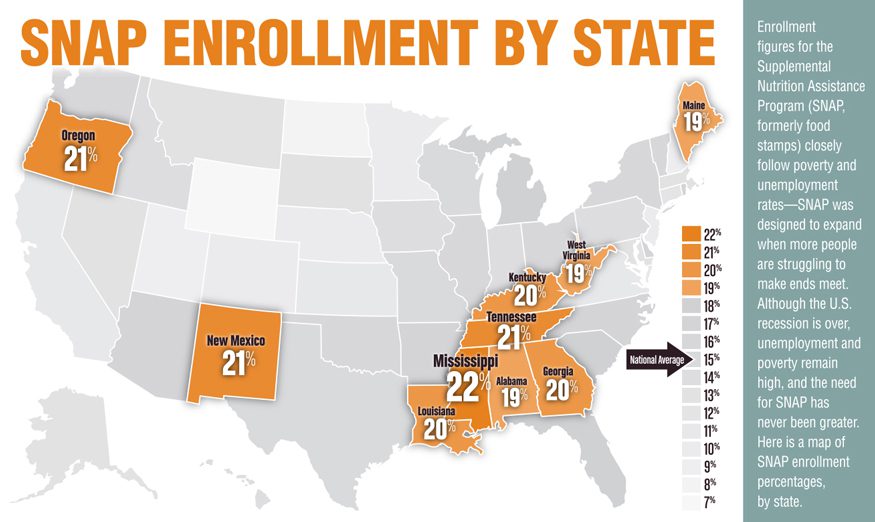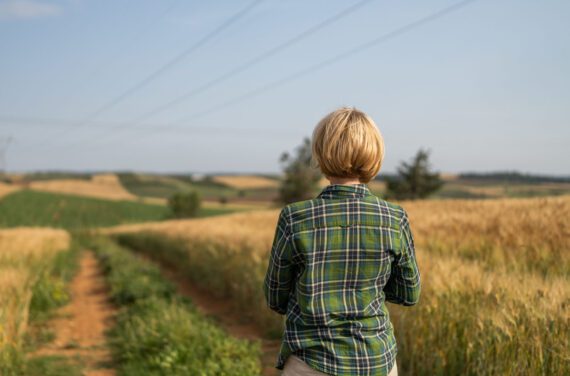By Stacy Cloyd
Where do people spend their Supplemental Nutrition Assistance Program (SNAP, formerly food stamps) dollars? The U.S. Department of Agriculture (USDA) has fought to keep this information a secret. We’re hoping they release this information, since it could be used to improve SNAP and make it more accessible to poor families.
As this Slate article describes, SNAP doesn’t just help the people who are buying food: it also helps the businesses whose customers they are. More than $74 billion in SNAP benefits was spent during fiscal year 2012 — at 246,565 stores, farmers’ markets, and other entities. We know this because USDA releases an annual report on SNAP retailers. The report includes some useful information — for example, it tells us that military commissaries took in eight times as much in SNAP benefits as farmers’ markets. This sort of information could be important to retailers deciding how to operate businesses or policymakers discussing military pay. USDA also provides a map of SNAP retailers.
But more detailed data about how much each vendor accepts in SNAP benefits would help even more. For example, the District of Columbia could find out where its residents’ SNAP dollars are being spent in neighboring Maryland or Virginia. This information on how families balance competing factors such as sales tax, transportation, prices, and selection when buying food could help the DC government decide what incentives are necessary or useful in encouraging food retailers to locate in lower-income neighborhoods.
Knowing which small grocery stores and farmers’ markets attract lots of SNAP customers would also allow hunger advocates to learn from successful businesses and share best practices. It would also help them identify the highest-volume vendors so that they can offer the stores information and recommendations on how they can supply a variety of nutritious foods.
When the government spends money, it usually provides information on exactly where these public funds are going. But data about SNAP benefits are unusually hard to come by. In fact, USDA was recently in federal court over the issue of what information it must make available.
Reporters at the Argus Leader in South Dakota wanted to know which stores in their state were selling the most food funded through the SNAP program and how those numbers had changed over the years. USDA said it could not release that data because it was legally required to keep certain types of information that retailers possess private.
The case went all the way to the 8th Circuit Court of Appeals, which decided in January 2014 that SNAP sales figures are different: although stores could supply the information, the USDA in fact never asks them to do so. Instead, USDA gathers the information from the third-party processors that run Electronic Benefit Transfer (EBT) terminals. The court ruled that the information should be made public upon request. This decision may not be the end of the story, since USDA could appeal to the full panel of judges on the 8th Circuit or even ask the Supreme Court to hear the case.
We hope that USDA will instead agree to release the information. While stores are generally not eager to have their sales data made public (since it could help their competition), it seems a small price to pay for the extra business generated by SNAP dollars – money that customers would otherwise not be able to spend in their local stores. Also, even this more specific information is general enough that no one could use it to find out where a specific household shopped or what they purchased.
Writer and futurist Stewart Brand coined the phrase “information wants to be free.” In this case, freeing government data about where SNAP is spent might also help poor families afford to put food on the table.
Stacey Cloyd is a former policy analyst at Bread for the World Institute.



